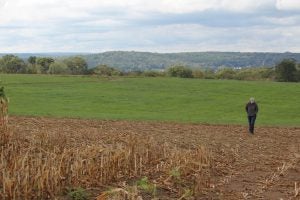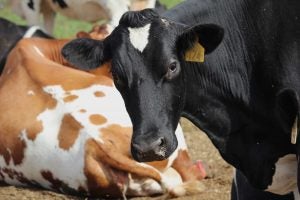Agriculture is a strange mix of innovation and how we’ve always done things. It’s time to embrace more of the innovation side so that we can keep people in the industry.
I was visiting a farm a few months ago, and my friends there — the family members of my generation — all want to stop farming full time, at least what full-time currently looks like on their farm.
It broke my heart to hear that, but I can’t judge them for that decision because I work off the farm too. I needed better health insurance. I wanted to pursue my other interests and hobbies on my nights and weekends, instead of living and breathing the farm. I wanted a more sustainable lifestyle than I had witnessed in so many friends and family.
So, that chapter will close on yet another farm, and the farm story will (hopefully) find new lead characters to carry the farm forward and continue supporting our collective food security needs and the secondary benefits that accrue from a vibrant agricultural community.

Driving home, I couldn’t help but wonder if this farm story could have had a different ending. The question these young farmers answered was to farm on or not. Perhaps it’s time we started asking some new questions:
- How can we better support young farmers, so they aren’t forced to choose between having a “life” and farming?
- What can we change about agriculture to make it more inviting as a sustainable career?
- How can we, as an agricultural community, work together to ensure all farmers have access to health insurance and other benefits?
- Are there any innovative practices that can help us achieve these goals? We’ve got robots milking cows, hands-free devices for our tractors and drones scouting fields. What else can help us?
- How can we ensure famers are able to earn a livable wage?
- How can we farm on in a way that is sustainable for everyone? If we answer the questions above, this one might answer itself.
The approach we often take to solving these issues is fixing the system. But that can be overwhelming. The system is huge and multi-faceted. Instead, we can start locally and make changes to help one farmer and then another have a more sustainable farm and life. Understanding the unique challenges of individuals will open doors to understanding and solutions that benefit a larger cross-section of farmers. It can also help us address the problems with a proactive approach, or at the source, instead of reacting as they arise.
» Related: Successes in agricultural sustainability are happening all around us
Cooperative Extension, Farm Bureau, and our state Departments of Agriculture all need to work on this challenge together, along with everyone else that provides services to the agricultural community. Service providers can take the following approaches to help the next generation: Coordinate efforts among your organizations to make it easier for farmers to find the services they need; connect farmers with resources; and facilitate conversations on collective resources.
We don’t need to limit ourselves to those with agricultural expertise either — we can seek knowledge and expertise from outside the agricultural sector, and this is where some of our innovations may come from. Agriculture is unique, but all businesses, especially family and small businesses, face some similar challenges and have much to teach us on interpersonal communications, strategic planning, and sustainable growth. They might have also addressed similar issues and have techniques that can be adapted to agriculture.

As a farming community we also need to adjust our expectations of the next generation of farmers. We already know that succession planning in our farm businesses is a tough topic, and we need to start navigating it sooner. Farm families must accept that things will change on the farm; everything changes. Let the next generation have a voice and guide the next phase. They are the ones that will live with the consequences of the decisions. Service organizations can help facilitate these conversations. Farm families can keep initiating conversations with each other, understanding that it will be awkward and uncomfortable at times. Working through this phase is essential to finding the best solution for everyone and moving the farm forward.
Farming isn’t easy, but it is rewarding. There are few things more satisfying than being connected to the land and helping ensure a safe and abundant food supply. That satisfaction and reward doesn’t need to come at such a high cost though.
Perhaps in the future the question other young farmers will be pondering is not whether they will farm on but how they will farm on and what a successful solution looks like for them.
Stacey Stearns is part of the 10th generation of Mountain Dairy, a vertically integrated farm in Connecticut, and is a program specialist with UConn Extension.


